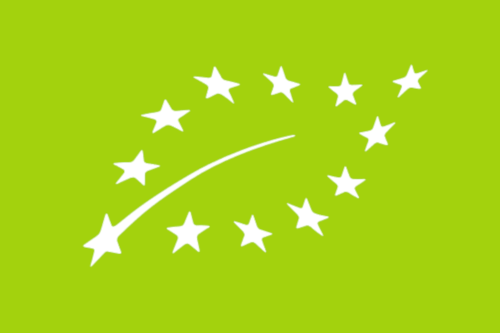The Garden of Medicinal Plants

Medicinal plants can be found everywhere in the Michaelshof gardens as well as on the field, where they are cultivated in many beds for tea production. Along the passages through the various gardens you will encounter well-known medicinal herbs such as chamomile and lavender, but also some less-known, such as the betony, the bloodroot and many more. They are often characterised by wonderful fragrances and are in no way inferior to the ornamental plants in terms of beauty.
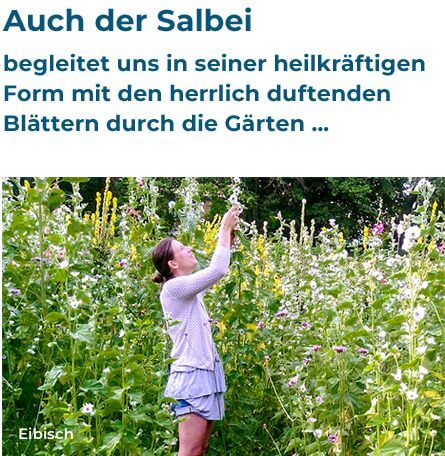
For example, our gaze falls on the foxglove, which in its different variants is a splendid companion for the roses but can be found in large numbers on the left perennial plateau below. It is poisonous and only the species ‘Digitalis purpurea’ is extraordinarily effective as a homeopathic remedy. Sage also accompanies us in its original form with the wonderfully fragrant leaves through the gardens; it has many brothers and sisters in the ornamental plants, which are beautiful to look at.
Along the way you can also see the wild celandine, which can kill every wart. Next door, the Gundermann blooms in April, charms with its small violet florets and the whole plant is used in the herbal tea.
Also of importance is the well-known Ribwort plantain with his fat brother, the Broadleaf plantain, which is much more scarce. Not to forget: the stinging nettle! It grows almost everywhere and everyone seems to know it, but very few people know how beneficial it is to the earth and man.
The rose arises in large numbers in our ornamental gardens, but their medicinal form, the Damascus rose, is mainly to be found on the medicinal plant field.
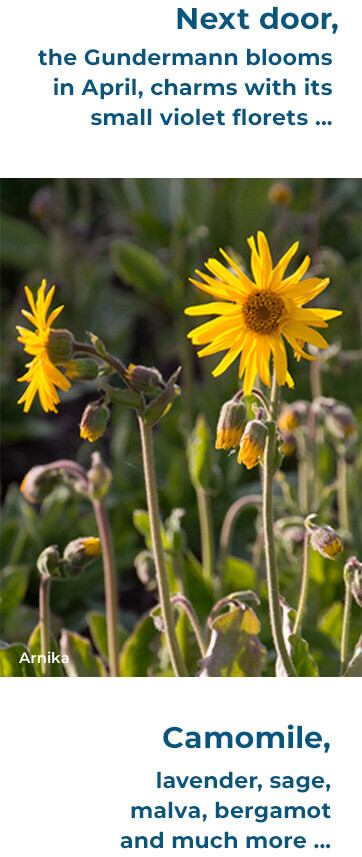
Shrubs and trees
In the case of the medicinal shrubs, the sloe is the first flowers to be harvested in March. However, it takes a long time and its fruits do not reach full maturity until November, when it is then used as a juice, in particular as a fortifying drink during the cold season. The sloe berry is also an important ingredient in many other remedies.
The elderberry is widespread in our gardens, a plant we appreciate very much for its strong growth as well as for its delicious flowers and fruits.
Another original shrub, which is up to 4 meters high and to be found in the arena, is the sea buckthorn, whose bright orange berries make a very fortifying juice. This plant is one of the most outstanding sources of vitamin C.
If we look further up towards the trees we find underneath some extraordinarily beneficial healing agents. For example, the linden with its sweet-mild taste; they can be enjoyed well dried all year round as tea and thus prevent any colds. But the spruce needles are also well-known because of their fortifying effect as an addition to a bath.
Much of what helps people helps the earth too…
We also have to look up to the sky to discover the mistletoe in the treetops, which lives there as a parasite. However, it is also curative and in small amounts is used especially against cancer. We use the same only for our quality analyses. There are no mistletoes in Sammatz, but there is a good amount on offer some distance away.
As we are already discussing trees: in the area of our website under ‘Research & Healing’ you will also find more information on the production and application of biodynamic preparations, as told by Rudolf Steiner in 1924 for the fertility of the earth in his ‘Agricultural Course’. Here, the cosmic qualities of medicinal plants such as nettles, valerian, dandelion, chamomile and yarrow are investigated, as is the role of oak bark to ensure the fertility of the soil. Much of what helps people helps the earth too…
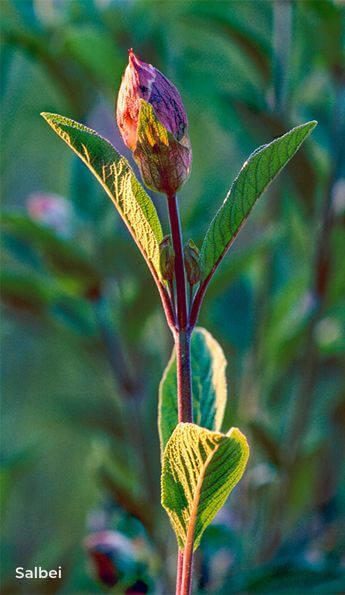
On the field of the medicinal plants
We then come to the field and the special cultivation of the medicinal plants where we see a large number of beds. Most of what we find in our teas and other products grows here during spring, summer and autumn. Camomile, lavender, sage, malva, bergamot and much more.
We are proud that after a few years of trying in our Northern German plains, we were also able to grow arnica. It is nice to have this wonderful medicinal plant with us, even though it is able to develop its ingredients with more strength in its actual home, the heights of the magnificent alpine meadows. Some of our staff therefore go there for harvest. A very sought-after task!
A little further floats the slightly numbing, valiant valerian – some find that it stinks …
A wonderful floral scent flows through the air of the medicinal plant field on warm days. So we find behind the frame, the place for the hops – which is tasty not only in beer, but also as a strengthening component of our teas – those in the southern areas are home to thyme, which is one of the originators of Mediterranean fragrances. A little further floats the slightly numbing, valiant valerian – some find that it stinks! – with its flower heads high above the other plants. Even the angelica, with its thick umbels and sturdy stalk, remains a little smaller, but convinces with its broad shape.

Just like our ornamental gardens and vegetable fields, our medicinal plants are grown biodynamically and fertilised with our preparations, which gives them a special quality.
For the weeding and harvesting work, our small team of gardeners are assisted by the help of many volunteers from all over the world and also students who complete their agricultural internship with us. A very impressive work area where you can gain knowledge about the respective nature of the plants!
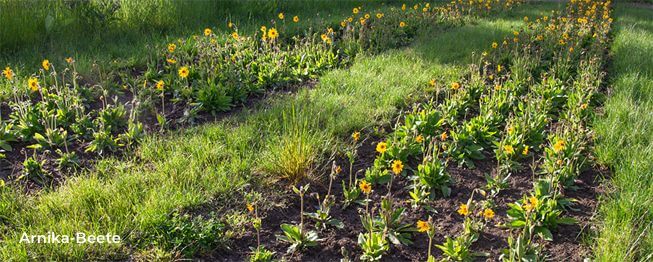
If you want to become more acquainted with the diverse family of medicinal plants: several seminars are offered in our house of nature. There you will certainly find many exciting tips and suggestions.



